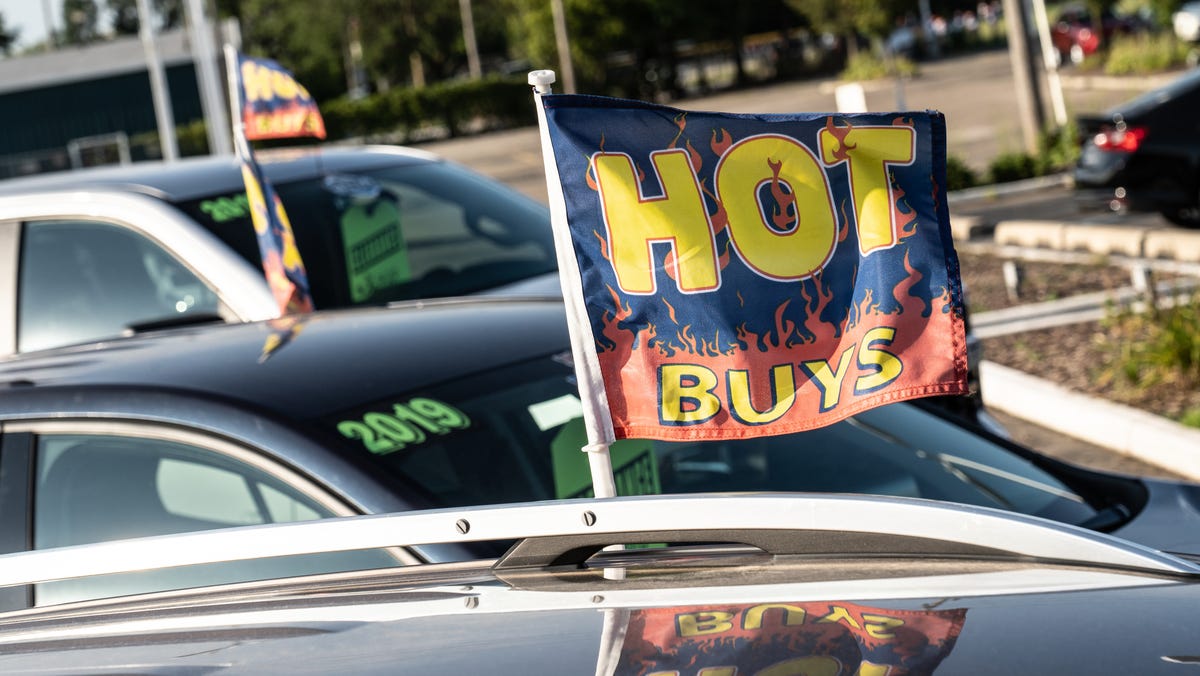Before the COVID-19 pandemic, more than half the used cars for sale in the nation were 3-year-old vehicles priced for $20,000 or less. Today, those same type of vehicles comprise only 11% of used cars.
In fact, most shoppers who are in the market for a used vehicle would be hard-pressed to find a 3-year-old model below even $30,000, forget finding one for $20,000. According to a new study from research website iSeeCars.com called: “The sub-$20,000 used car is almost gone,” the average list price for a used 3-year-old vehicle is now $32,635, that’s $9,476 more than it was six years ago.
“There’s very little negotiation going on for used cars because demand is so high,” said Karl Brauer, executive analyst with iSeeCars.com, which is based in Woburn, Massachusetts. “The price of used cars was dropping for the last two years, not dramatically, but going down a little bit every month. The last three months, it’s gone up again.”
In February, the average list price for a 1- to-5-year-old used car was $31,257, up 1% from the year-ago period. In June, it was up to $32,437, a 4.8% bump from a year ago June, Brauer said.
Of course, that’s still cheaper than buying a new car. According to Edmunds.com, the average manufacturer’s suggested retail price in June was $50,523, but the average transaction price — which is what a customer pays for the car — was $48,261.
“Who knows what will happen in July. Maybe the trend will stop?” Brauer said of used car prices climbing.
Metro Detroit reflects what’s happening nationally. Brauer said in 2019, 52.2% of 3-year-old used car inventory in the Motor City was priced $20,000 or less. Today, only 13% of the used car inventory in metro Detroit consists of 3-year-old cars priced for $20,000 or less.
Brauer told the Detroit Free Press, part of the USA TODAY Network, that his company conducted the study in mid-June. It analyzed data on 2.6 million 3-year-old cars. They focused on 3-year-old cars because those are in the “heart of the age group in the used market,” which are 1 to 5 years old, he said.
The study showed that the bestselling 3-year-old used models that are virtually no longer available for under $20,000 include the Chevrolet Equinox, Honda Civic, Kia Sportage, Nissan Rogue, Toyota Camry and Toyota Corolla.
For example, Brauer said in 2019, 97.6% of 3-year-old Honda Civic cars could be bought for $20,000. Today, 5.7% of 3-year-old Honda Civics are available at that price range at $20,000.
“That’s 94.1% drop-off,” Brauer said. “The Toyota Corolla, 99.9% were available to a $20,000 buyer in 2019 and now its 62.9% so they’ve lost about 37%. Chevy Equinox: 88.1% were available in 2019 for a $20,000 buyer and now 22.3% for a $20,000 buyer.”
The study found that passenger cars saw the biggest price increase since 2019, up 48.7%. Prices for used pickups rose 28.8% and used SUVs prices are up 15.4%. Here’s how that translates to dollars:
The dramatic shift in used vehicle market pricing can be attributed to a few things, Brauer said.
First there is inflation, which the nation saw rise after the COVID-19 pandemic. But a $9,500 average price boost can’t all be due to inflation, Brauer said.
He blames it more on the restricted new-vehicle production in the second half of 2020 as automakers idled assembly plants because of the pandemic. Even though they were back online in a matter of weeks, it takes time to get the suppliers and production back to full capacity. When they finally did, many automakers were then hit with the semiconductor shortage in 2021 that hindered new vehicle production again.
“So you had a huge hit for new car production from mid-2020 to 2022,” Brauer said. “We’re now in 2025 and the cars that would be 3 years old would have been built around 2021 to 2022 and they are not there in terms of the volume the used market needs. It is because the supply of new cars in three-plus years ago are restricted.”
On top of that, prices have systematically been pushed higher by demand as a result of the pandemic, which saw people move from urban to suburban areas when they no longer had to come into an office. With no public transportation in surburban areas, those people now need to buy cars.
“So right when you had new car production restrictions, you had new car demand go up … and this is three or four years ago,” Brauer said. “That pushed up prices of new cars and pushed people into the used market, which pushed up the prices of used cars.”
To add to the lack of available late-model used cars, he said, the people who leased cars three to five years ago, came off those leases and saw the prices of new and used cars and realized buying out their lease was the cheapest way to get another vehicle. So those leased vehicles are not going back into the used market, he said.
“So all these things, almost every variable that could or would affect used car pricing, has done so in a bad way,” Brauer said. “That’s made them more expensive.”
Jamie L. LaReau is the senior autos writer who covers Ford Motor Co. for the Detroit Free Press. Contact Jamie at jlareau@freepress.com. Follow her on Twitter @jlareauan. To sign up for our autos newsletter. Become a subscriber.
Contributing: Linda Roy, Canton Daily Ledger, Illinois












